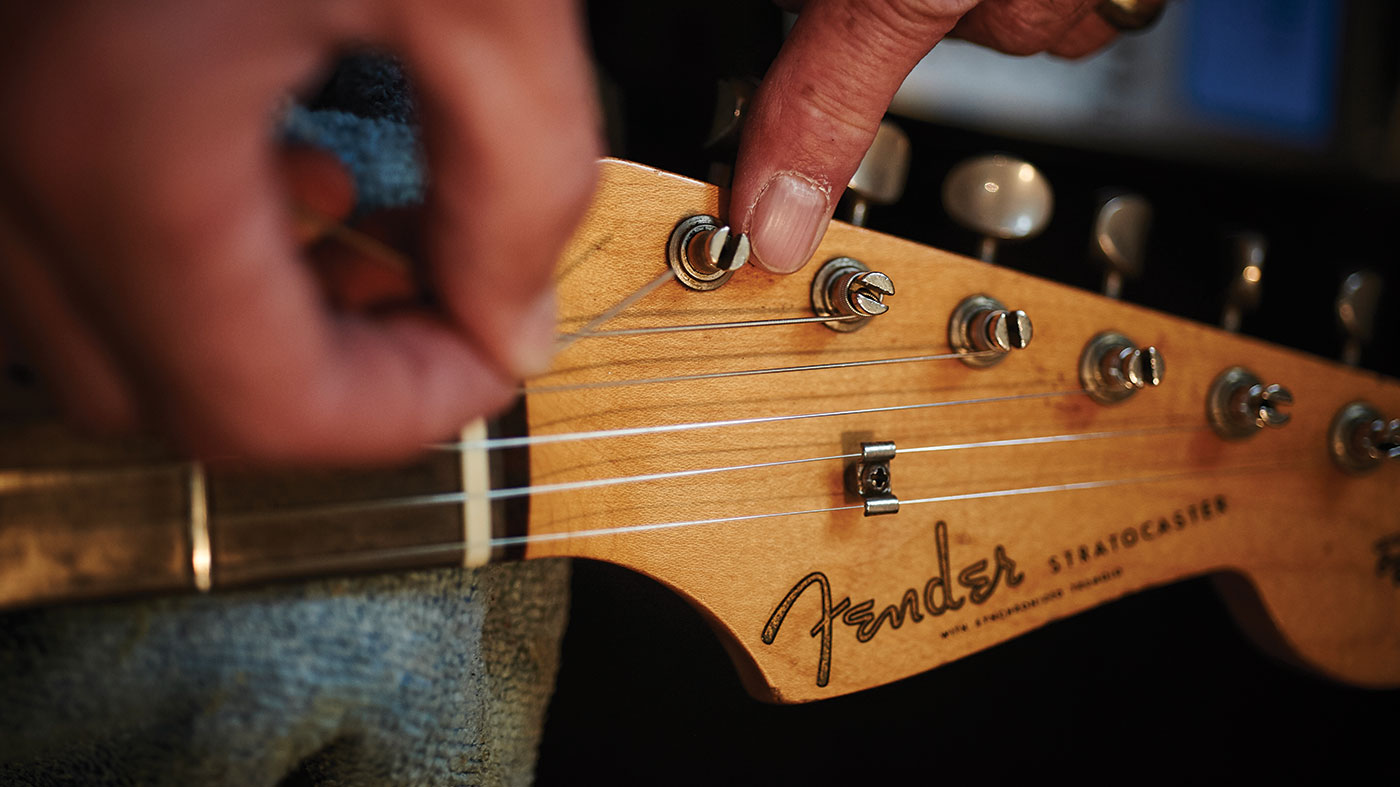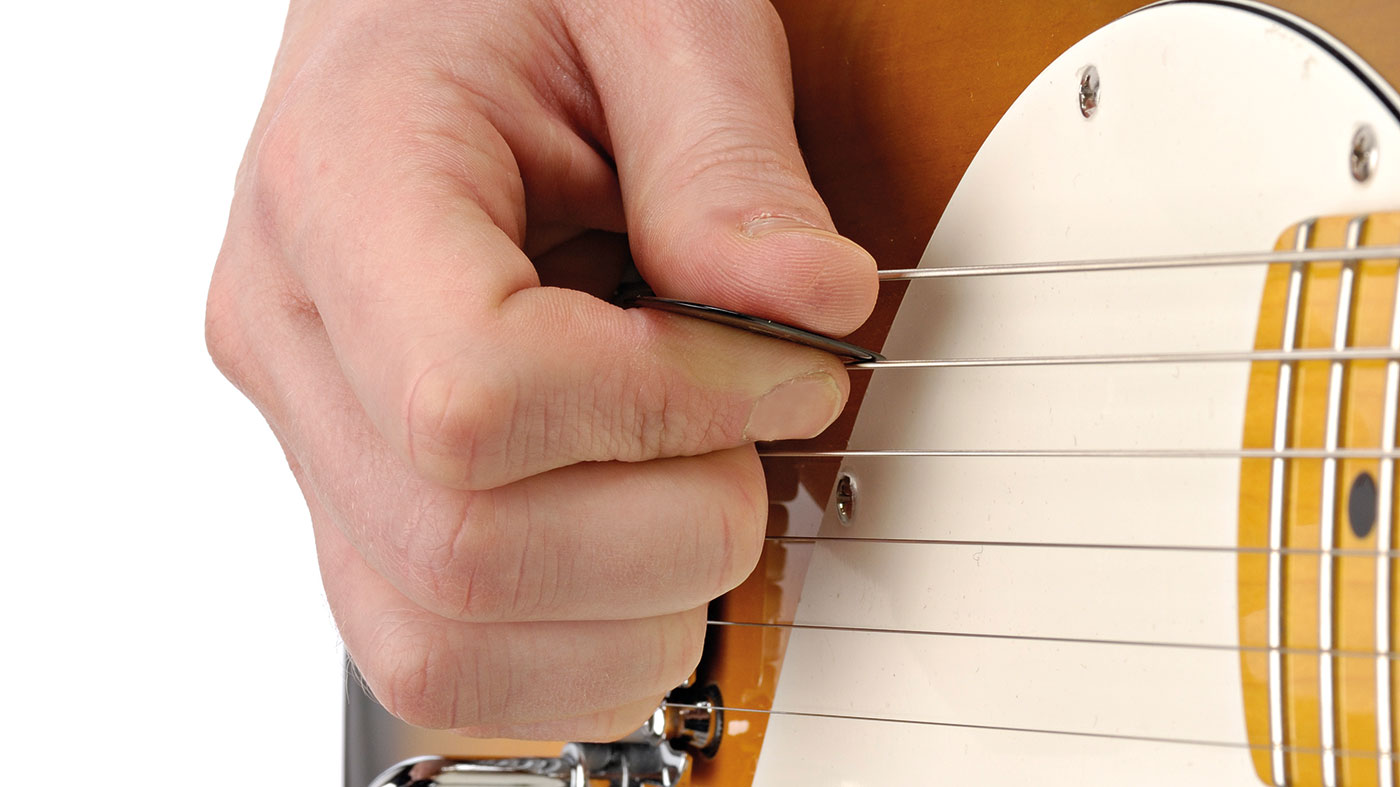
ELECTRIC GUITAR WEEK: Can’t afford a Custom Shop creation that’s been fettled for the stage? Fear not, there’s plenty you can do to prepare a workaday electric to rock harder at your next gig.
We join a bevy of seasoned techs to hear their advice on prepping guitars for peak performance.
Electric Guitar Week is brought to you in association with Fender. Check out the Electric Guitar Week hub page for more tips and tutorials.
1. Thin pickings can be good
Roger Mayer, the audio electronics wizard who was Jimi Hendrix’s tone tech, offers this surprisingly simple piece of plec- related advice for taking to the stage with confidence.
“When you’re playing live, use the thinnest possible pick so that the pick will break first before the string - if you hit the strings hard. You should be able to hit the strings as hard as you want with the pick and not break them! It gives you a sense of freedom when you’re playing, knowing that when the red mist comes down you can really attack the string and not break it. Being able to use more attack when you need to is really important.”
2. Make firm contact
You need a great contact to get a detailed sound... get a good quality Switchcraft output jack socket
Roger Mayer
Roger Mayer is no stranger to fettling Strats and also suggests that close scrutiny of the output jack can yield tone benefits on stage.
“One of the most important and overlooked things on a guitar is the output jack. The original output jack on a Stratocaster was a Switchcraft one that had a very strong grip to it. In fact, it was quite hard to pull the guitar lead out!
Want all the hottest music and gear news, reviews, deals, features and more, direct to your inbox? Sign up here.
“Some of the newer ones aren’t strong enough to retain a really good connection. The current from the pickups is so low that it’s really, really sensitive to dirt and oxidisation. The tighter socket will also cut through oxidisation a lot better. You need a great contact to get a detailed sound, so my top tip is make sure you get a good quality Switchcraft output jack socket fitted.”
3. Keep it clean
“Keeping your sockets and the ends of your leads clean is very important,” says Roger Mayer, once again emphasising the importance of keeping connections optimal throughout the signal chain.
“If you’re on the road, you’ll often need to clean them every time you play a gig. I used to do this for Jimi when I was out on tour with him. I mean, how long does it take to wipe the guitar leads down? I use several cleaning solutions. One of them is almost the same as lighter fluid - like Ronson fluid. It’s actually a very good substitute.
“If you can’t find some proper cleaning fluid, try and get hold of a can of fluid that you’d use for a Zippo lighter. Methylated spirits and isopropyl alcohol will also work very well as a cleaning agent. In fact, they’re very good for cleaning guitar strings, too.”

4. Stretch it out
Not stretching-in the strings can have an impact on the truss rod, therefore having an impact on the string action height
James Sharpe
James Sharpe, tech to top acts such as Opeth and Gary Numan, has this advice to offer on getting top performance from your guitar night after night on stage.
“One thing that I always feel is overlooked from a performance point of view is the importance of stretching in strings properly when you change them. A well strung-up guitar with a nice fresh set of strings on is good only once the strings are stretched in properly.
“Not stretching-in the strings can have an impact on all manner of aspects: the most obvious being how well the guitar will stay in tune. It also affects the pressure on the truss rod, therefore having an impact on the string action height. If your guitar has a trem system, then, again, having unstretched strings can end up giving you a nasty surprise.
“Another particular touring point is making sure you keep a well-gigged instrument clean. You wouldn’t believe the damage sweat can do to a guitar if left in a case after a show for a few months, not to mention the acrid stench! Corrosion on the frets, pickups and hardware can discolour the wood, and in bad cases corrode the electrics. Keeping an instrument clean and dry is a must after playing a show.”
5. One at a time
Ryan Taylor of Deadmill Guitars, who also techs for top bands such as Foals, gives this advice for making sure your Strat vibrato doesn’t throw your tuning out when performing live.
“Here’s my advice on modifying and adjusting tremolo systems. I get frustrated with that common criticism ‘tremolos always put my guitar out of tune so I’ll only play hard-tails.’
“Here’s the how-to: tune a string, then use the trem. Continue until the string stays in tune after vigorous ‘trem-ing’. Then move on to the next string; repeat; then check back in on string one and so on. Once the guitar is in tune and remains unaffected by the tremolo action, using the trem will actually return your guitar to pitch when it wanders instead of being problematic.”

6. Consider upgraded hardware
Simon Law, who techs for guitar luminaries such as Robben Ford, recommends considering a hardware upgrade for your off-the-shelf Fender if you want incremental improvements in tone and functionality next time you hit the stage.
Makers like CTS, Alpha and Emerson make some amazing tone pot replacements for not a huge amount of money
Simon Law
“Most ‘off-the-shelf’ guitars are fitted with fairly low budget hardware; even the most expensive custom shop guitars can be improved in this department. Fender-type guitars are usually fitted with bridges that are made from all sorts of alloys and metals. These can always be upgraded to far superior items made by such people as Callaham.
“These are a fairly straightforward swap, and so long as you match the saddle alignment and height, and so on - you shouldn’t have to adjust too much - the tonal improvement can be from moderate to huge depending on what was fitted before. Both sustain tone and volume increases are made.”
7. Upgrade your electronics
“All electric guitars are fitted with various pots - short for potentiometers - switches and sockets,” continues Simon Law. “Some of these can be okay, but many affordable electrics are fitted with relatively modest-quality volume pots, sockets and switches. A better-quality pot can give a better ‘sweep’ from one end of its range to the other and a better tone.
“Most single-coil pickups guitars are fitted with 250k pots; this value is chosen for its tonal response to the pickups themselves. If these measure less than 250k, then the guitar can become dark and dull sounding. If they measure more, then they can be bright and shrill. So ideally their actual value needs to be as close to the 250k as possible.
“The same goes for the 500k pots fitted to humbucker-equipped guitars. Makers like CTS, Alpha and Emerson make some amazing replacements for not a huge amount of money, and they really are worth every penny.
“For me, the best sockets are made by Switchcraft. Switchcraft also makes the best Gibson-styled switches - while, for Fender type guitars, I’d recommend getting a US-made CRL switch. All these can be fitted relatively easily by anyone with a soldering iron and a little patience - just take some pictures and copy the wiring like for like.”
Electric Guitar Week is brought to you in association with Fender. Check out the Electric Guitar Week hub page for more tips and tutorials.
Guitarist is the longest established UK guitar magazine, offering gear reviews, artist interviews, techniques lessons and loads more, in print, on tablet and on smartphones
Digital: http://bit.ly/GuitaristiOS
If you love guitars, you'll love Guitarist. Find us in print, on Newsstand for iPad, iPhone and other digital readers
